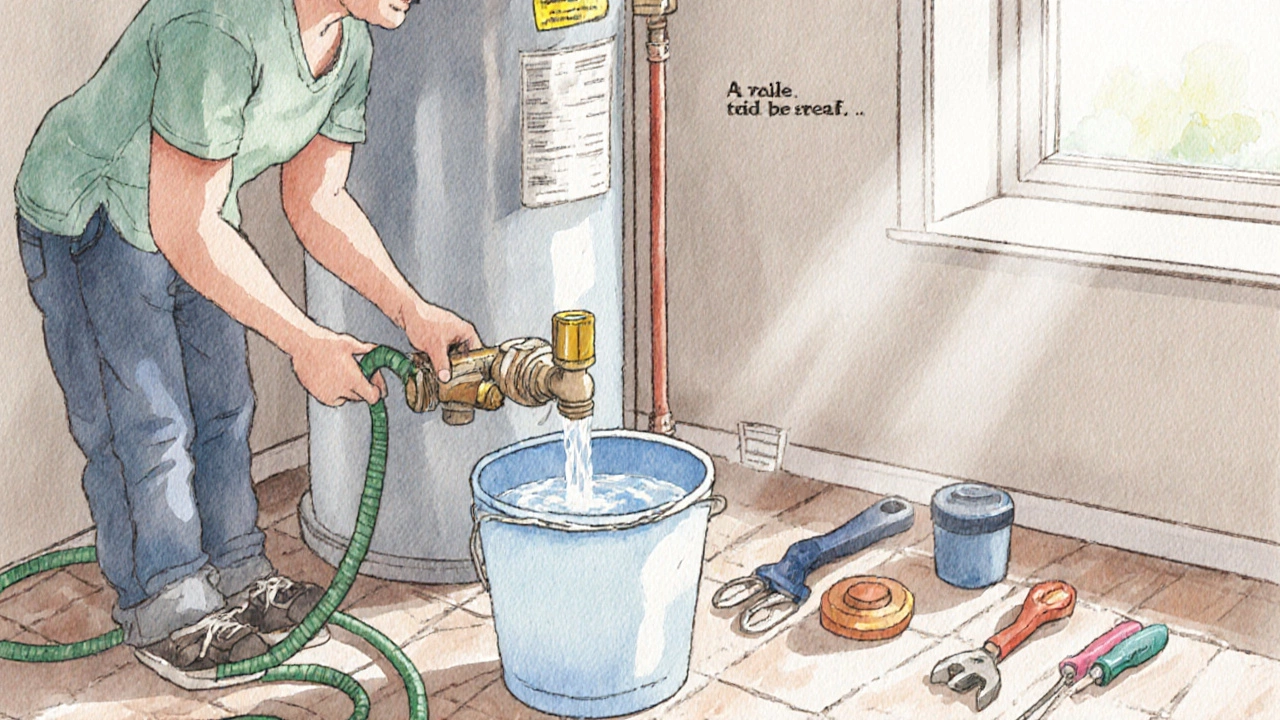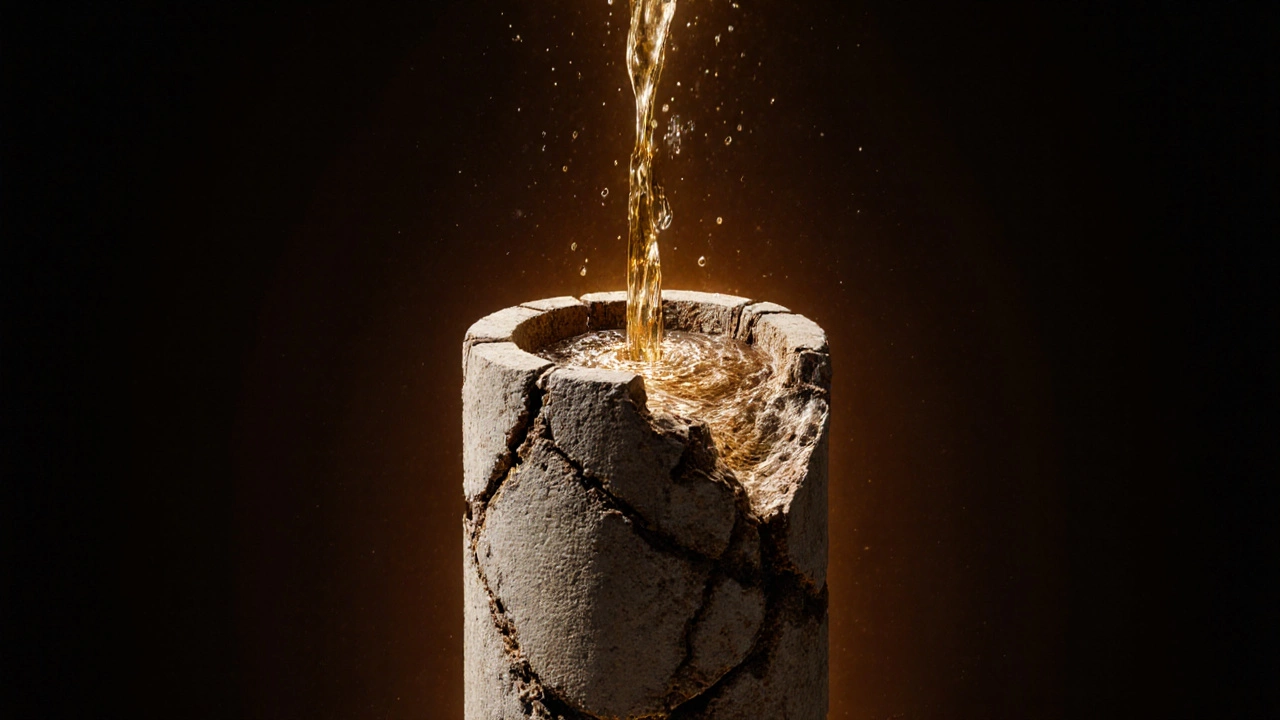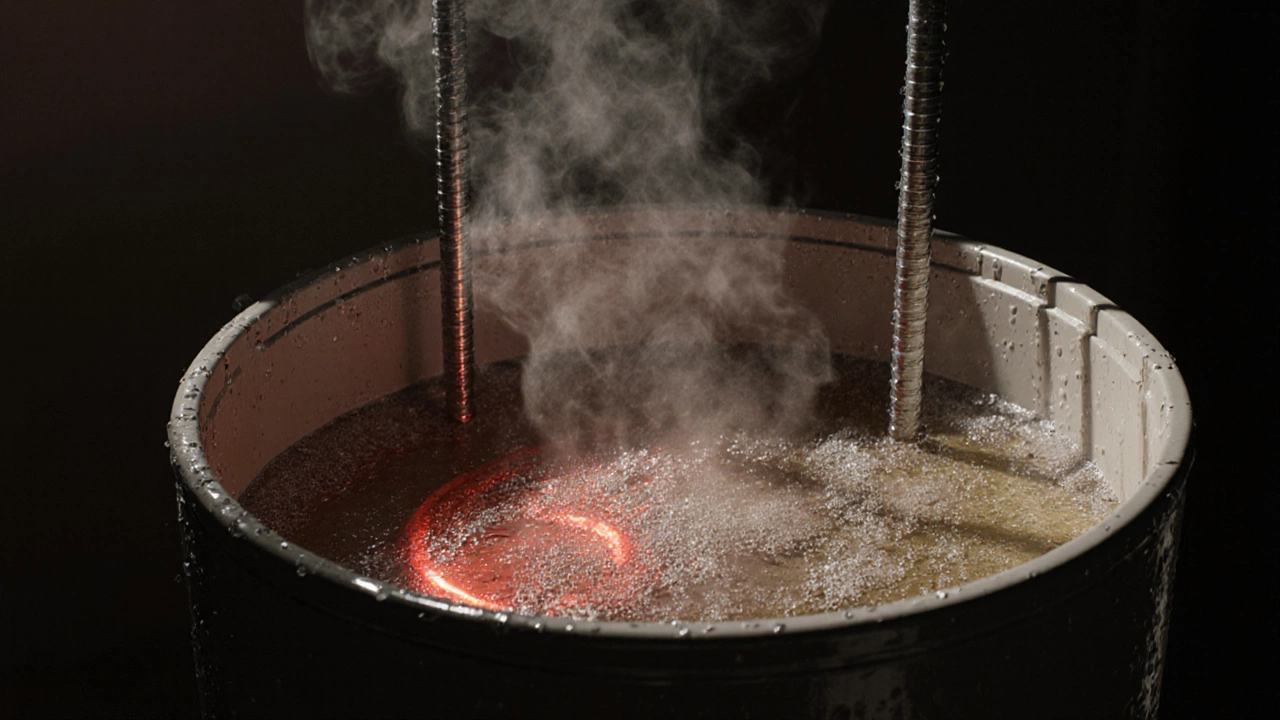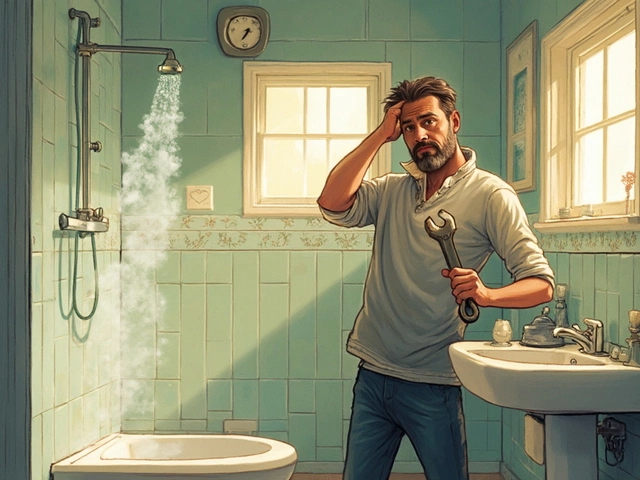Water Heater Problem Diagnostic Tool
Diagnose Your Water Heater Problem
Select symptoms you're experiencing to determine if sediment buildup is likely the cause. This tool uses the information from our guide on the most common water heater issues to provide personalized recommendations.
If your hot water heater suddenly stops working, you’re not alone. Around 60% of water heater repairs in Brisbane come down to one single issue: sediment buildup. It’s quiet, slow, and sneaky-until you wake up to cold showers and a strange rumbling noise from the tank. This isn’t a glitch. It’s physics. Over time, minerals in the water settle at the bottom of the tank. Hard water areas like Brisbane, with high calcium and magnesium levels, make this worse. What starts as a minor annoyance turns into a broken heating element, reduced efficiency, or even a tank rupture if ignored.
Why Sediment Builds Up and How It Breaks Your Heater
Water isn’t pure. Even treated municipal water carries dissolved minerals. When you heat that water, those minerals drop out of solution and stick to the bottom of the tank. Think of it like sand collecting in a bathtub after a long soak-but instead of cleaning it, you leave it there for years. After 5-8 years, that layer can be an inch thick. That layer acts like insulation. The heating element has to work harder to push heat through it. This burns out the element faster. It also causes the tank to overheat in spots, leading to cracking or corrosion.
You’ll know it’s happening if your heater starts making popping or banging sounds. That’s the sediment heating up and trapping steam underneath. It’s not dangerous like a gas leak, but it’s a clear sign your tank is under stress. You might also notice less hot water than before. A 50-gallon tank might only give you 25 minutes of shower time. That’s not a leak. That’s sediment stealing your capacity.
Other Common Problems-And How to Tell Them Apart
Sediment isn’t the only culprit. But it’s the most frequent. Here’s how to spot the others:
- Leaking tank: Water pooling around the base? Check the pressure relief valve first. If it’s dripping, it might just need replacing. But if the tank itself is wet or rusted, it’s done. No repair fixes a corroded tank.
- No hot water: Is the pilot light out? Is the thermostat turned down? Or did the upper heating element fail? Electric heaters have two elements. If the top one dies, you get cold water fast. Gas heaters might have a faulty thermocouple or gas valve.
- Smelly water: A rotten egg smell means bacteria are growing in the tank, usually because the anode rod has worn out. It’s not dangerous, but it’s unpleasant. Replacing the rod and flushing the tank fixes it.
- Water too hot: If the thermostat is stuck or set too high, you risk scalding. Most units should be set at 50°C. Anything above 60°C increases the risk of burns and mineral buildup.
Here’s the trick: if your heater is over 8 years old and you’re getting any of these issues, sediment is probably the root cause-even if it looks like something else. A flush can fix multiple problems at once.
How to Flush Your Water Heater (Step by Step)
Flushing removes sediment. It’s not hard. You don’t need a plumber. Just follow these steps:
- Turn off the power. For electric heaters, flip the circuit breaker. For gas, turn the dial to "Pilot".
- Turn off the cold water inlet valve. This stops new water from entering the tank.
- Attach a garden hose to the drain valve at the bottom of the tank. Run it to a floor drain or outside.
- Open the pressure relief valve on top. This lets air in so water flows out smoothly.
- Open the drain valve and let water run until it’s clear. This can take 15-45 minutes. If the water is still cloudy after 20 minutes, close the valve, refill the tank briefly, then drain again.
- Close the drain valve, remove the hose, turn the cold water back on, and refill the tank.
- Once full, turn the power or gas back on.
Do this once a year. If you have very hard water, do it every six months. It takes less than an hour. It extends your heater’s life by 5-10 years. And it cuts your energy bill by up to 15%.

When to Replace Instead of Repair
Not every problem is fixable. Here’s when to call it quits:
- The tank is rusted or leaking from the body-not the valves.
- You’re replacing the heating element for the third time in two years.
- Your heater is over 10 years old and you haven’t flushed it regularly.
- It takes longer to heat up than it used to, even after flushing.
Modern water heaters are 20-30% more efficient than models from 10 years ago. A new 50-gallon electric heater with a 12-year warranty costs around $1,200 installed in Brisbane. But with lower bills and fewer repairs, you break even in 3-4 years. Plus, you get consistent hot water without the noise.
Prevention Tips That Actually Work
Don’t wait for disaster. Do this now:
- Install a water softener if your water hardness is above 150 mg/L. You can test it with a home kit from a hardware store.
- Set your thermostat to 50°C. Higher settings speed up sediment and increase scalding risk.
- Check the pressure relief valve every 6 months. Lift the lever slightly. Water should flow. If it doesn’t, replace it.
- Replace the anode rod every 3-5 years. It’s a $40 part that stops tank corrosion. Most plumbers charge $150 to do it. You can do it yourself in 30 minutes.
These steps cost less than a single emergency repair call. And they keep your heater running smoothly for over a decade.

What Happens If You Ignore It
Ignoring sediment doesn’t just mean cold showers. It leads to:
- Broken heating elements ($200-$400 to replace)
- Pressure valve failure (risk of tank explosion-rare, but possible)
- Full tank corrosion (costs $1,500+ to replace)
- Higher electricity bills-up to $300 extra per year
One homeowner in Logan City paid $850 to replace a broken element… then had to replace the whole tank six months later because sediment had eaten through the bottom. That’s $1,700 for two repairs that could’ve been avoided with a $20 hose and 30 minutes of work.
Why does my water heater make popping noises?
Popping or rumbling sounds come from sediment at the bottom of the tank. When the heating element turns on, it heats the water trapped under the sediment layer. The water turns to steam, bubbles up, and pops. This is a clear sign you need to flush the tank. The noise won’t go away until the sediment is removed.
Can I flush my water heater myself?
Yes, most homeowners can flush their water heater safely in under an hour. You need a garden hose, gloves, and a bucket. Turn off the power and water supply, attach the hose to the drain valve, open the pressure relief valve, and let it drain until the water runs clear. It’s not dangerous if you follow basic safety steps.
How often should I flush my water heater?
Flush it once a year. If you live in an area with hard water-like Brisbane-do it every six months. Hard water has more minerals, which means sediment builds up faster. Regular flushing can double your heater’s lifespan.
Is a leaking water heater always a sign I need a new one?
Not always. Leaks from the pressure relief valve or drain valve can be fixed by replacing the part. But if water is coming from the tank body itself-especially if you see rust or corrosion-then the tank is damaged beyond repair. No patch or sealant will fix it. Replace it.
What’s the best temperature setting for a water heater?
Set it to 50°C. This is hot enough to kill bacteria and provide comfortable showers, but low enough to prevent scalding and reduce mineral buildup. Setting it higher than 60°C increases energy use, speeds up sediment formation, and raises the risk of burns.
Next Steps: What to Do Today
Don’t wait for your heater to fail. Here’s what to do right now:
- Check your heater’s age. If it’s over 8 years old, start planning for maintenance.
- Listen for noise. If it’s rumbling or popping, schedule a flush.
- Look under the tank. Any puddles? Check the valves first, then the tank.
- Set your thermostat to 50°C if it’s higher.
- Buy a hose and gloves. Next weekend, flush it yourself.
Most water heater failures are preventable. You don’t need to spend hundreds on a plumber. You just need to act before the problem gets worse. One simple flush can save you hundreds-and give you years of reliable hot water.





